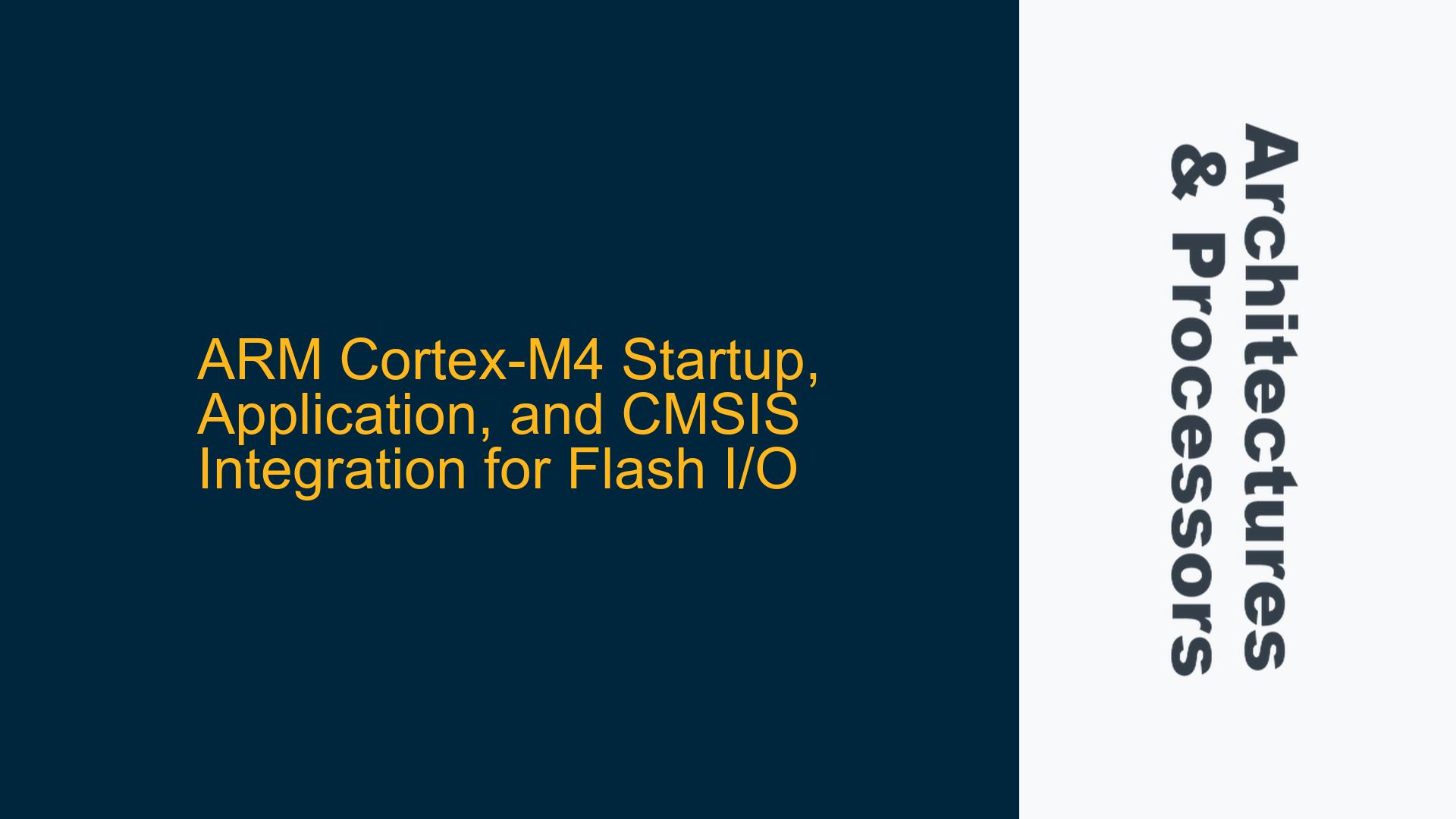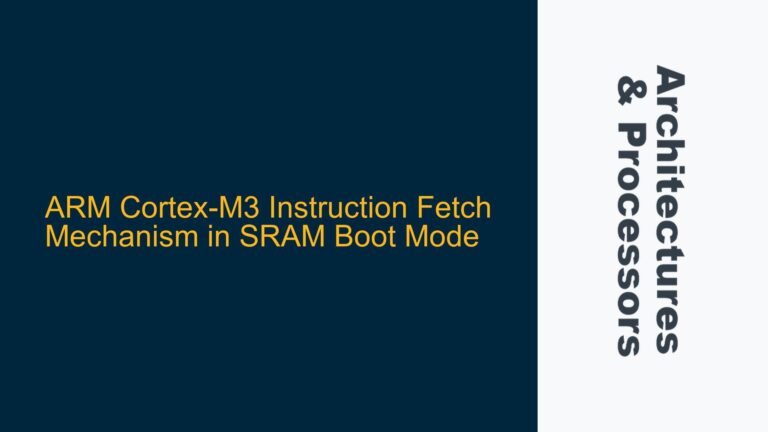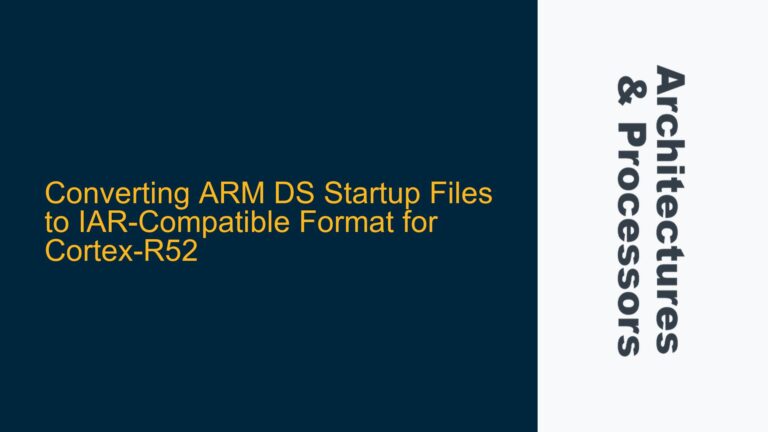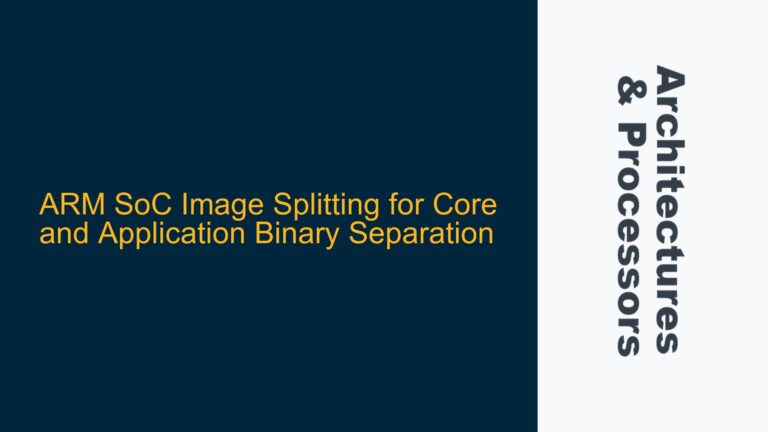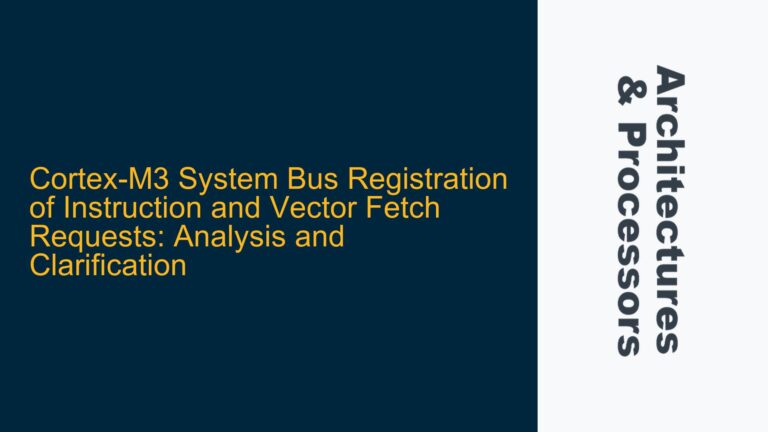ARM Cortex-M4 Startup File Configuration and Application Integration
The integration of the startup file (startup_stm32f4xx.s), application code (hello.c), and CMSIS files (system_stm32f4xx.c, stm32f4xx.h, and system_stm32f4xx.h) is a critical step in developing firmware for ARM Cortex-M4 microcontrollers. The startup file is responsible for initializing the microcontroller’s stack pointer, reset handler, and interrupt vector table. The application code, typically written in C, contains the main logic of the program. The CMSIS (Cortex Microcontroller Software Interface Standard) files provide a standardized way to access the microcontroller’s peripherals and core features.
The startup file (startup_stm32f4xx.s) is written in assembly language and is specific to the STM32F4xx series of microcontrollers. It defines the initial stack pointer, the reset handler, and the interrupt vector table. The reset handler is the first function executed after a reset and is responsible for initializing the microcontroller’s hardware and jumping to the main function in the application code.
The application code (hello.c) is where the main logic of the program resides. In this case, the goal is to create a simple application that uses scanf and printf to read and write data to the internal flash memory of the microcontroller. The scanf function is used to read input from the user, while the printf function is used to output data to the console. The challenge here is to ensure that these functions can interact with the internal flash memory, which requires careful configuration of the microcontroller’s flash memory controller.
The CMSIS files (system_stm32f4xx.c, stm32f4xx.h, and system_stm32f4xx.h) provide a standardized interface to the microcontroller’s peripherals and core features. The system_stm32f4xx.c file contains the system initialization code, which sets up the microcontroller’s clock system and other essential peripherals. The stm32f4xx.h file contains the register definitions for the STM32F4xx series of microcontrollers, while the system_stm32f4xx.h file contains the system configuration definitions.
To achieve the goal of reading and writing data to the internal flash memory using scanf and printf, several steps must be taken. First, the startup file must be correctly configured to initialize the microcontroller’s stack pointer and interrupt vector table. Second, the application code must be written to use scanf and printf to interact with the internal flash memory. Third, the CMSIS files must be correctly integrated to provide the necessary support for the microcontroller’s peripherals and core features.
Flash Memory Access and I/O Function Integration Challenges
One of the primary challenges in this scenario is ensuring that the scanf and printf functions can interact with the internal flash memory of the microcontroller. The internal flash memory is typically used to store the program code and constant data, but it can also be used to store user data. However, accessing the internal flash memory requires careful configuration of the microcontroller’s flash memory controller.
The flash memory controller is responsible for managing the read, write, and erase operations on the internal flash memory. To write data to the flash memory, the microcontroller must first erase the target sector, as flash memory can only be written to after it has been erased. This process requires careful timing and coordination to avoid data corruption.
The scanf function is used to read input from the user, but in this context, it will be used to read data from the internal flash memory. This requires that the flash memory be mapped to a memory address that can be accessed by the scanf function. Similarly, the printf function is used to output data to the console, but in this context, it will be used to write data to the internal flash memory. This requires that the flash memory be mapped to a memory address that can be accessed by the printf function.
Another challenge is ensuring that the scanf and printf functions can operate correctly in an embedded environment. These functions are typically used in a desktop environment where there is a full operating system and a rich set of libraries to support them. In an embedded environment, these functions must be implemented using the limited resources available on the microcontroller. This requires careful optimization and customization of the scanf and printf functions to ensure that they can operate efficiently and reliably.
Implementing Flash Memory Access with scanf and printf
To implement flash memory access using scanf and printf, several steps must be taken. First, the flash memory must be correctly configured to allow read and write operations. This involves setting up the flash memory controller and ensuring that the necessary memory addresses are mapped correctly.
The first step is to configure the flash memory controller. This involves setting the appropriate registers in the microcontroller to enable flash memory access. The flash memory controller typically has registers that control the read, write, and erase operations. These registers must be set to the correct values to allow the scanf and printf functions to access the flash memory.
Next, the memory addresses for the flash memory must be mapped correctly. The flash memory is typically divided into sectors, each of which can be independently erased and written. The memory addresses for these sectors must be mapped to the addresses that the scanf and printf functions will use to access the flash memory. This requires careful configuration of the memory map in the microcontroller.
Once the flash memory controller and memory addresses are configured, the scanf and printf functions can be implemented. The scanf function must be customized to read data from the flash memory. This involves reading the data from the appropriate memory address and storing it in a buffer that can be processed by the application code. The printf function must be customized to write data to the flash memory. This involves writing the data to the appropriate memory address and ensuring that the data is correctly stored in the flash memory.
Finally, the application code must be written to use the customized scanf and printf functions to interact with the flash memory. This involves reading data from the flash memory using scanf, processing the data as needed, and writing data to the flash memory using printf. The application code must also handle any errors that may occur during the read and write operations, such as data corruption or flash memory errors.
In conclusion, integrating the startup file, application code, and CMSIS files to enable flash memory access using scanf and printf is a complex but achievable task. It requires careful configuration of the flash memory controller, correct mapping of memory addresses, and customization of the scanf and printf functions. With the correct implementation, it is possible to create a simple application that can read and write data to the internal flash memory of an ARM Cortex-M4 microcontroller.
